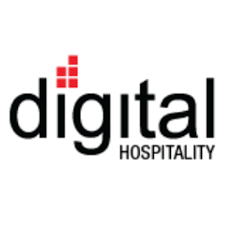As the dawn of generative AI unfolds, a distinct separation will emerge among professionals and businesses: those who leverage this transformative technology to enhance productivity and innovation and those who lag behind. The landscape of success is rapidly evolving, and the decisive factor will be a generative AI mindset.
The question then becomes not if but how we align ourselves with this wave of change.
It’s a big question we should all be thinking about. But the starting point for managing any change is usually working out how we need to change ourselves. For most of us, I believe this means considering how we can adopt a generative AI mindset.
What exactly does this mean? How should we be training ourselves to think, act and react if we want to make the most of the opportunities on the table?
This goes beyond skills, which undoubtedly are another critical piece of the puzzle but are more relevant to how we use the technology. Mindset is more about being prepared to identify opportunities and capitalize on them. So, here I’ll try to define its core characteristics as well as take a look at how anyone – not just those lucky enough to have been born with them - can refine and master them.
What Is The Generative AI Mindset?
If there’s one core belief that’s central to the generative AI mindset, it’s understanding that generative AI is a tool. It won’t do our jobs for us – we’ll use it to do our jobs more effectively. It won’t replace the need for human attributes like creativity and the desire to solve problems, but it will dramatically cut the time we spend on repetitive or technical aspects of our work so we can spend more time on those things.
Beyond that, though, this is the same change in mindset that’s been adopted by those who’ve successfully taken advantage of other big changes within our lifetimes. The emergence of the internet, for example. From Jeff Bezos founding Amazon to Gen-Z digital hustlers finding endless new ways to generate revenue from social media. They all possess, adopt, or develop a core set of characteristics that mean they aren’t held back from identifying opportunities by self-limiting beliefs, processes, or behaviors.
The ideas behind mindset are closely tied to the idea of organizational culture – which is also often either an aid or impediment to the successful adoption of AI. As author and head of AI strategy at Boomi Technology, Mike Bachman puts it in this post, “The first thing to understand about fostering a culture of AI-readiness is that it must start with a fundamental shift in mindset.”
So, what are these mindset qualities, how can we work out if we have them, and – if we don’t – what can we do to develop them?
Qualities Of The Generative AI Mindset
Adopting a generative AI mindset, I believe, requires a shift from traditional ways of thinking to a more adaptive, collaborative, and forward-thinking approach.
Adaptability is key. This means being willing to walk away from what we know, even if we think it works, in order to try something new. Even to an adaptive person, unfamiliarity is uncomfortable -but they’ll use this as an incentive to become familiar with whatever’s new – a new tool, process, skill, or even a person.
Closely related to this is curiosity, which has driven every great inventor and explorer. This can be honed by training ourselves to ask questions whenever we aren’t sure about something. Sometimes, we can have a tendency to be content with simply not understanding how, why, or what if. Asking these questions and seeking answers about our environments, experiences, or processes lets us identify areas where we can make things better. If you don’t understand how something works, there’s a chance that it doesn’t – and an opportunity to make an improvement!
It’s also important to develop an ongoing, continuous approach to learning. Gone are the days when school and college set us up for a lifelong career. Keeping ahead today means constantly updating our skills and knowledge. Luckily, a proliferation of free and affordable online courses and a growing awareness among employers of the need for upskilling and reskilling workforces means opportunities are often available.
Other factors include a willingness to work collaboratively (with humans and machines), an awareness of the ethical implications of generative AI, critical thinking abilities and a drive to solve problems.
The Geek Mindset
Recently, I was lucky enough to read a pre-release version of the latest book by MIT principal research scientist and head of the MIT Digital Economy Initiative, Andrew McAfee – The Geek Mindset.
McAffee’s definition of a geek is an “obsessive maverick” who is tenacious and unafraid to be unconventional. He defines what he refers to as “the geek way” as four characteristics: speed, ownership, science and openness.
Adopting this into their mindset has enabled the geeks to inherit the Earth. As McAfee told me when I spoke to him recently, one-third of all market capitalization gains made by US companies in the 21st century were generated by businesses in northern California – specifically, he’s referring to Silicon Valley, the home of the geeks.
Speed is demonstrated by the ability of those who are successful in the tech sphere to iterate quickly – launching minimum viable products, failing when necessary, and using the lessons learned to improve.
Ownership refers to the ability to ensure everyone is responsible for their own work and hitting their own goals. Science means acting according to the data – in alignment with what the evidence shows is the best direction to head. Openness is the ability to accept criticism or new ideas.
All of these qualities tie in quite closely with what I think of as the generative AI mindset, and once again, they’re learned traits. On top of that, they’re all closely tied to characteristics that make us successful humans – learning, critical thinking, and collaboration - rather than technical or mechanical aptitude.
The Right Mindset
As can be seen by the examples cited above, most of these qualities are ones that we all either use or don’t use in our day-to-day lives, depending on the sort of person we are.
But critically, they’re all qualities that just about anyone can develop and hone in our everyday environments, as well as our working lives.
Adaptability, curiosity, openness, willingness to collaborate and an aptitude for problem-solving are human qualities that we can spot in ourselves and others.
Mostly, they’re skills that we hone through interacting and engaging with other people. In turn, I believe they'll be of great benefit when it comes to defining our relationships with the new generation of machines and intelligent tools that are set to transform every industry.
The question then becomes not if but how we align ourselves with this wave of change.
It’s a big question we should all be thinking about. But the starting point for managing any change is usually working out how we need to change ourselves. For most of us, I believe this means considering how we can adopt a generative AI mindset.
What exactly does this mean? How should we be training ourselves to think, act and react if we want to make the most of the opportunities on the table?
This goes beyond skills, which undoubtedly are another critical piece of the puzzle but are more relevant to how we use the technology. Mindset is more about being prepared to identify opportunities and capitalize on them. So, here I’ll try to define its core characteristics as well as take a look at how anyone – not just those lucky enough to have been born with them - can refine and master them.
What Is The Generative AI Mindset?
If there’s one core belief that’s central to the generative AI mindset, it’s understanding that generative AI is a tool. It won’t do our jobs for us – we’ll use it to do our jobs more effectively. It won’t replace the need for human attributes like creativity and the desire to solve problems, but it will dramatically cut the time we spend on repetitive or technical aspects of our work so we can spend more time on those things.
Beyond that, though, this is the same change in mindset that’s been adopted by those who’ve successfully taken advantage of other big changes within our lifetimes. The emergence of the internet, for example. From Jeff Bezos founding Amazon to Gen-Z digital hustlers finding endless new ways to generate revenue from social media. They all possess, adopt, or develop a core set of characteristics that mean they aren’t held back from identifying opportunities by self-limiting beliefs, processes, or behaviors.
The ideas behind mindset are closely tied to the idea of organizational culture – which is also often either an aid or impediment to the successful adoption of AI. As author and head of AI strategy at Boomi Technology, Mike Bachman puts it in this post, “The first thing to understand about fostering a culture of AI-readiness is that it must start with a fundamental shift in mindset.”
So, what are these mindset qualities, how can we work out if we have them, and – if we don’t – what can we do to develop them?
Qualities Of The Generative AI Mindset
Adopting a generative AI mindset, I believe, requires a shift from traditional ways of thinking to a more adaptive, collaborative, and forward-thinking approach.
Adaptability is key. This means being willing to walk away from what we know, even if we think it works, in order to try something new. Even to an adaptive person, unfamiliarity is uncomfortable -but they’ll use this as an incentive to become familiar with whatever’s new – a new tool, process, skill, or even a person.
Closely related to this is curiosity, which has driven every great inventor and explorer. This can be honed by training ourselves to ask questions whenever we aren’t sure about something. Sometimes, we can have a tendency to be content with simply not understanding how, why, or what if. Asking these questions and seeking answers about our environments, experiences, or processes lets us identify areas where we can make things better. If you don’t understand how something works, there’s a chance that it doesn’t – and an opportunity to make an improvement!
It’s also important to develop an ongoing, continuous approach to learning. Gone are the days when school and college set us up for a lifelong career. Keeping ahead today means constantly updating our skills and knowledge. Luckily, a proliferation of free and affordable online courses and a growing awareness among employers of the need for upskilling and reskilling workforces means opportunities are often available.
Other factors include a willingness to work collaboratively (with humans and machines), an awareness of the ethical implications of generative AI, critical thinking abilities and a drive to solve problems.
The Geek Mindset
Recently, I was lucky enough to read a pre-release version of the latest book by MIT principal research scientist and head of the MIT Digital Economy Initiative, Andrew McAfee – The Geek Mindset.
McAffee’s definition of a geek is an “obsessive maverick” who is tenacious and unafraid to be unconventional. He defines what he refers to as “the geek way” as four characteristics: speed, ownership, science and openness.
Adopting this into their mindset has enabled the geeks to inherit the Earth. As McAfee told me when I spoke to him recently, one-third of all market capitalization gains made by US companies in the 21st century were generated by businesses in northern California – specifically, he’s referring to Silicon Valley, the home of the geeks.
Speed is demonstrated by the ability of those who are successful in the tech sphere to iterate quickly – launching minimum viable products, failing when necessary, and using the lessons learned to improve.
Ownership refers to the ability to ensure everyone is responsible for their own work and hitting their own goals. Science means acting according to the data – in alignment with what the evidence shows is the best direction to head. Openness is the ability to accept criticism or new ideas.
All of these qualities tie in quite closely with what I think of as the generative AI mindset, and once again, they’re learned traits. On top of that, they’re all closely tied to characteristics that make us successful humans – learning, critical thinking, and collaboration - rather than technical or mechanical aptitude.
The Right Mindset
As can be seen by the examples cited above, most of these qualities are ones that we all either use or don’t use in our day-to-day lives, depending on the sort of person we are.
But critically, they’re all qualities that just about anyone can develop and hone in our everyday environments, as well as our working lives.
Adaptability, curiosity, openness, willingness to collaborate and an aptitude for problem-solving are human qualities that we can spot in ourselves and others.
Mostly, they’re skills that we hone through interacting and engaging with other people. In turn, I believe they'll be of great benefit when it comes to defining our relationships with the new generation of machines and intelligent tools that are set to transform every industry.












 RSS Feed
RSS Feed